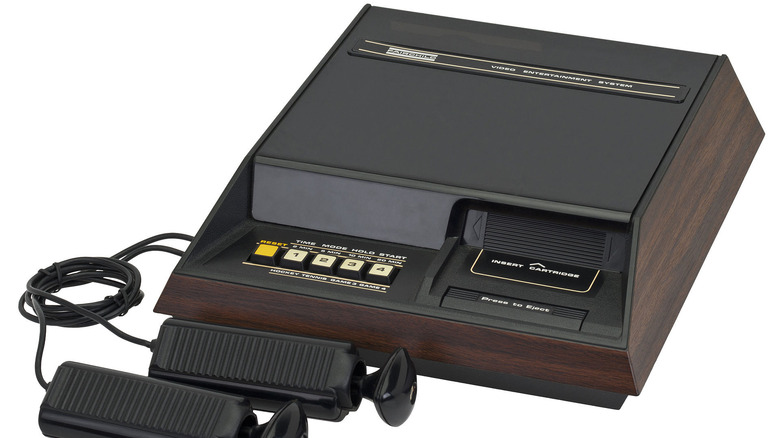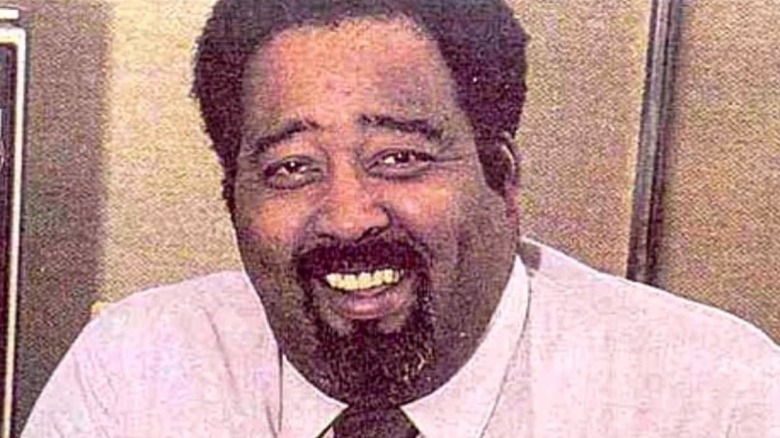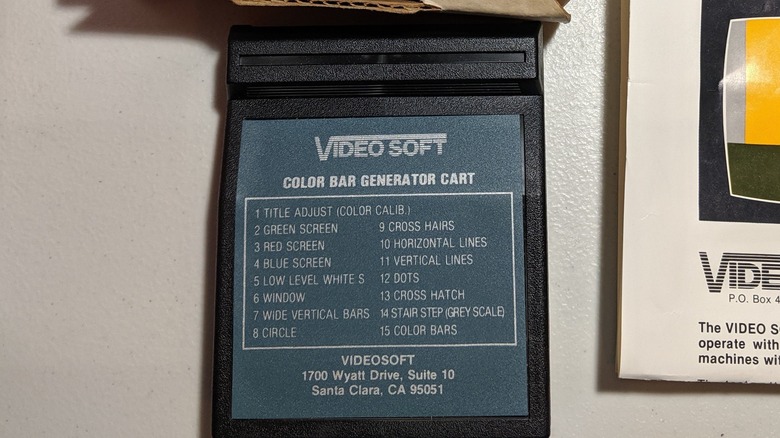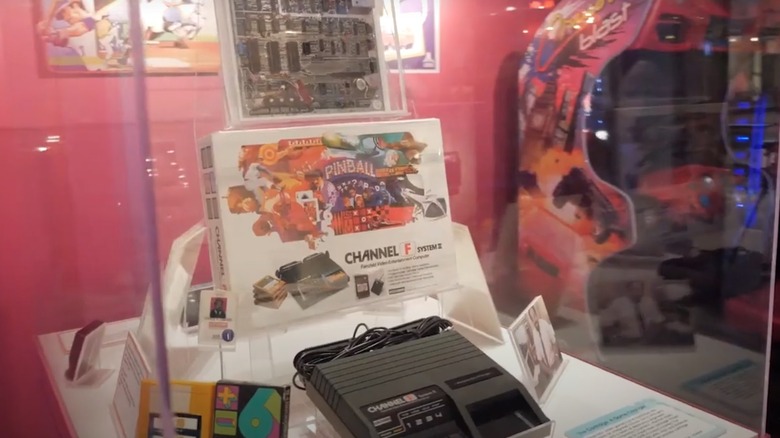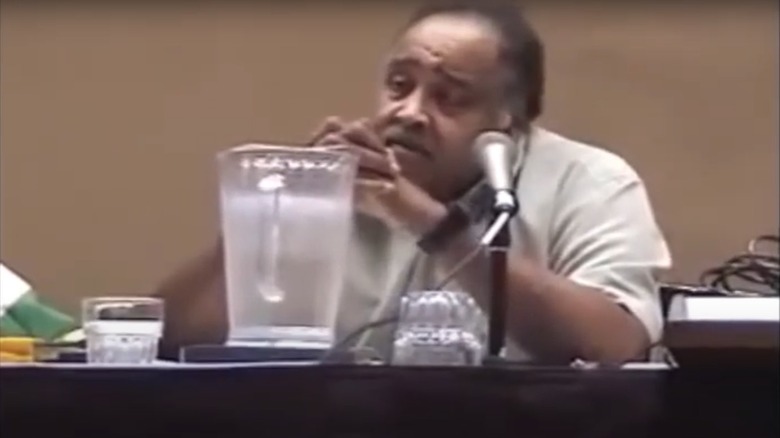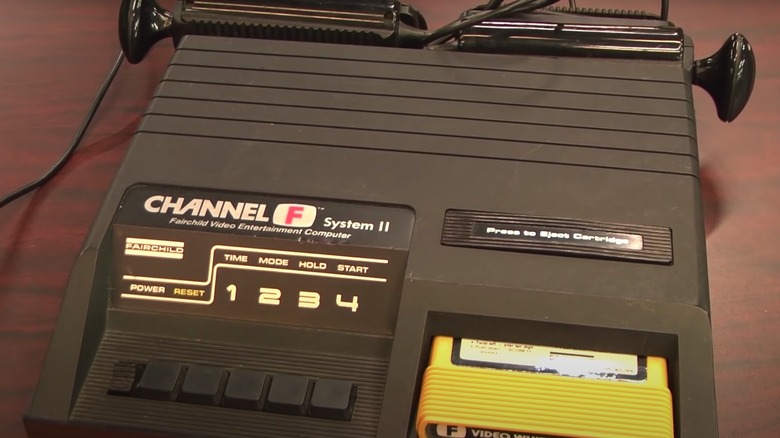The Untold Truth Of Jerry Lawson, The Father Of The Video Game Cartridge
Imagine a world where video game options were limited to whatever was pre-programmed onto your console. Sure, you might find a few titles you'd enjoy, but after a while, you'd grow tired of the finite selection. Well, that was what it was like in the early days of home console gaming.
Systems were initially sold with all of the titles loaded onto the unit. Even Nintendo's first home gaming console was designed in such a way (no, not the Nintendo Entertainment System, but a Japan-exclusive "Pong" clone). It wasn't until the Fairchild Channel F that interchangeable cartridges opened up a whole new world of possibilities. While most remember the Atari 2600 as the first major home console, the Fairchild Channel F came before it, introducing gamers to external game cartridges. The system has mostly been forgotten in the wake of modern console gaming, but its importance in video game history is undeniable.
In its day, the Fairchild Channel F was an ambitious project requiring some of the most skilled engineers around, and one man played a vital role in getting the project off the ground: Jerry Lawson. Often considered to be the father of the video game cartridge, Lawson is a monumental figure in gaming history.
Jerry Lawson was self-taught
Growing up, Jerry Lawson was an ambitious child. In an interview with Benj Edwards of Vintage Computing and Gaming, Lawson revealed he had various projects as a kid that included a homemade ham radio, a side business selling custom-built walkie-talkies, and even an amateur radio station. To top it all off, he taught himself how to work with electronics at a young age. By the time he entered college, he already knew his stuff inside and out.
His daughter, Karen Lawson, told the San Francisco Chronicle, "By age 3 . . . he already understood the mechanisms of a gear." As she explained, her father was driven to defy the societal limitations that held African Americans back during that time. His exploration of the limitless potential that technology presented became a way for him to carve out a path in life that didn't appear to be available to him during that chapter of American history. Because of this, the San Francisco Chronicle explained, he spent his time "learning from experience rather than through traditional education."
His accomplishments are already monumental, but when you realize he was able to grasp the principles he did at such a young age — and without formal — it's even more mind-blowing.
Jerry Lawson founded his own video game development company
Lawson's career at Fairchild Semiconductor began in 1976, and while the impact he made with the company was significant, his tenure was actually relatively short. By 1980, Jerry Lawson quit his position at the company to strike out on his own. Lawson then started Videosoft, which was a game-development business that set out to create cartridges and other products for organizations like Atari, Amiga, CBS, Milton Bradley, Mattel, and Parker Brothers.
The company sadly fell victim to The Video Game Crash of 1983 and wasn't able to release a lot of products during its short lifespan. One interesting item that did make it to market was an Atari 2600 cartridge that acted as a tool for setting up color televisions, which was called the "Color Bar Generator." Had Videosoft survived the infamous crash, who knows what other innovations would have emerged. Before Videosoft went under, the company was working on what could have been a breakthrough in 3D gaming technology.
There is a Jerry Lawson collection at the Strong museum
In 2013, the Lawson family gathered an assortment of items that encompassed Jerry Lawson's accomplishments and donated them to The Strong National Museum of Play. His family wanted to "share his legacy with the world" and inspire visitors "to make their wildest dreams a reality." The collection comprises pieces like prototype hardware, Fairchild Channel F consoles and games, materials for projects that were never released, and more.
In 2019, The Strong published a video promoting the collection. Viewers could see examples of these historic pieces on display while gaining a better understanding of the significance of his seminal hardware. As The Strong's Jeremy Saucier explained, "when people come to the Strong and see these artifacts from Jerry Lawson ... they begin to understand that so much of what technology will mean in the future ... depends on what a current generation learns."
Indeed, the Jerry Lawson Collection offers aspiring young engineers the opportunity to not only gain insight into his life, but to learn from his work so they can build off of what he created.
A USC Games endowment was named after Jerry Lawson
While Jerry Lawson's incredible accomplishments went largely unrecognized throughout his life, though the impact he had on the industry is undeniable. Because of this, the USC Games division of the University of Southern California decided to honor his legacy by starting an endowment fund in his name. The Gerald A. Lawson Endowment Fund for Black and Indigenous Students was created so that more people of color could pursue careers in the gaming industry.
In a conversation with Gamesindustry.biz, Jim Huntley, a professor for USC Games, called this "a great opportunity to honor the man and make sure more people knew his name and his involvement in making sure we have the gaming industry we have today." The article discussed how Lawson's relative anonymity in the face of critical contributions is a clear indicator of the inequality that continues to permeate the games industry.
In the 2009 interview published by Vintage Computing and Gaming, writer Benj Edwards discussed how the industry was severely lacking in representation. Lawson shared with Edwards that because of this, there were "a lot of . . . eyes watching [him]." It's for this very reason that The Gerald A. Lawson Endowment Fund is an important step in the right direction.
Jerry Lawson helped perfect cartridge gaming systems
Writing for Fast Company, Benj Edwards explained that the game cartridge was actually originated by Wallace Kirschner and Lawrence Haskel. The two were on a mission to create a new kind of gaming system using interchangeable carts, but they needed help. When they went to Fairchild for funding, Lawson was put in charge of the project. He not only helped adapt the technology to work with the company's proprietary hardware, but he figured out a way to redesign the cumbersome prototype control setup into a more functional joystick.
In the article "Jerry Lawson Forever Changed the Video Game Industry" from How Stuff Works, Tara Yarlagadda spoke to Strong Museum's Jeremy Saucier, who explained that it was "Lawson's evaluation and recommendation" that set the project in motion. She also spoke with Benj Edwards, who concurred that Lawson was vital in bringing the Channel F to life. According to Edwards, "He was one of a team of engineers that designed it. He worked on the electronic circuit design and played a big part in the mechanics of the hand controller design."
"Pong" creator Allan Alcorn further described Lawson as "very practical at solving problems," and without this quality, the Channel F likely wouldn't have made it off the ground and cartridge gaming would have been in a very different place.

